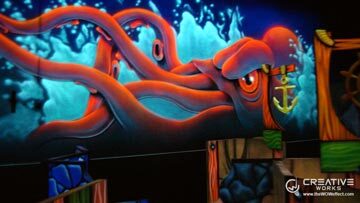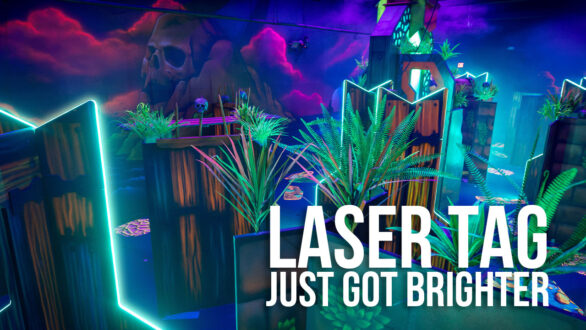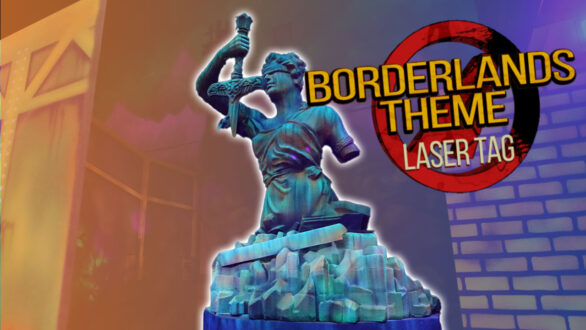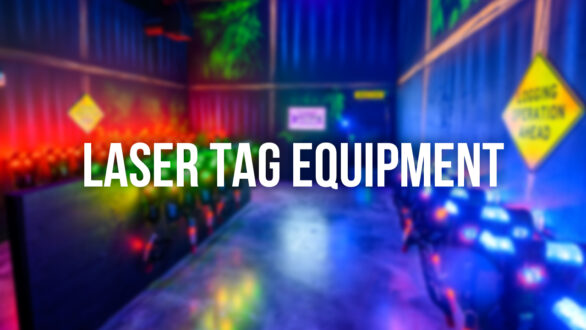BLOG
Laser Tag and the Evolution of the Experience

It has been over 25 years since the first laser tag facility opened in the U.S. Since that time, laser tag has ascended in the entertainment industry as an important and successful attraction to add to a facility’s mix. Back in the day, laser tag was considered a fad and the equipment was bulky, heavy, and cumbersome to use. As technology evolved and components shrunk, we went from the early days of wearing helmets, battery belt packs, and carrying around metal phasers to the modern day vest and phaser weighing about four times less. Today’s equipment is now lighter, more nimble, and technology packed to bring rich features and interactive games to this popular and stable attraction. Since its humble beginnings, a lot of research and data has been collected about the laser tag attraction by the International Laser Tag Association (ILTA), as well as others. Today, we know that the average player is typically seven to 14 years old, with the median age around nine. We understand they like to play games where they can compete with their friends.
Today’s Customer
Players are smart and quick to learn; understand options and look for variables to keep the experience ever changing; and want instant gratification and feedback, and rewards for their achievements. They have a passion to get extra features or enhancements as add-ons to the games they play. Also, they are computer literate with many having smart phones, computers, tablets, or other types of media devices. They enjoy going to the movies and seeing films with heroes and villains filled with action and excitement. In addition, they like to be part of the action, whether it’s role playing with their friends or playing games on their game consoles in their home. This is what excites and drives them, and this has been one of the growing trends that is now shaping the design and development of future laser tag attractions in our industry. The target demographic for this game and the adults of today can relate to Marvel Comics movies like The Hulk, Spider-Man, Iron Man, and Captain America. The world has seen and embraced 3D technology through the movie “Avatar” and has witnessed the undeniable success of this film because of the story, the atmosphere, and the technology behind its creation. The Star Wars films have graced the screens for over three decades and are now being remade for release again in theaters. The Star Trek franchise has seen countless successes, along with the Indiana Jones films and the Lara Croft films. The elaborate movie sets, characters, and stories from these films are ingrained in our culture and have driven this billion-dollar empire.
Game Environment
Today’s video games for the PlayStation and Xbox consoles have become very sophisticated to keep up with the demands of today’s youth. These games are generated in high definition and are extremely immersive. As a player in many of these top rated games you are walking around in an environment that is full of Hollywood-like props and pieces, tagging other opponents or characters, getting points and rewards, rising up in the levels, and accomplishing objectives to unlock new features, screens, and missions. A few have even been released in 3D to make the game “come alive” and be compatible with the new 3D televisions that are starting to make their way into homes. As the thirst for more interaction within these games grows, and the price of 3D televisions drops, you’ll see the trend of movies and games being released in 3D grow rapidly. Already many of the games to be released in the months to come are being made with 3D capabilities for those with this technology to enjoy. Building upon this interactive and rich game environment came last year’s release of the Kinect unit by Microsoft, which had predicted they’d sell about three million units before the end of 2010. Instead, they sold over eight million units in two months. It captures facial expressions, recognizes voices, and can tell players apart when more than one is enjoying the same game. It has been a revolutionary change in digital gaming that will start to shape how games are played in the future and demonstrates the power of being inside the game (similar to being inside a laser tag arena) and using your body to experience your surroundings. Today, when looking at the larger electronic gaming companies, you find that they are heavily investing in this type of technology and the associated software applications that will make the virtual of what we experience now more real in the next few years. In addition, plans are taking shape on the next generation gaming consoles that will grace the digital living rooms of tomorrow. As technology gets better and the motion-based sensors begin to remove the joystick controllers, the blurring between what is real and virtual will disappear, and the expectation for a similar experience will become stronger for attractions outside the home.
Digital Influence
Peeking around the corner, we can see that in-home entertainment choices are getting vaster, more interactive, and more feature rich. Technology has caught up, and the acceptance rate of devices such as game consoles, tablets, smart phones, and more is a real threat to the brick and mortar stores as evidenced in our society already. From telecom to music, movies, books, games, and more, the traditional way of engaging in an activity and experiencing something is being eroded by the digital realm. In essence, they are the unseen competitor we will face in our quest to be different, to stand out, to be relevant, and most importantly to be memorable in a sea of choices. They are not down the street or across town; they are everywhere and all around, bombarding our potential guests relentlessly. It’s easy to see the writing on the wall: Our kids are growing up in a world that is much more immersive and connected. The Internet has bridged the gap to many places and made our world smaller. For our society, time has become a commodity. With less time in our days to have fun (more school, more work, more chores, and more things to do), we are making decisions that drive the need and desire to have experiences that offer the most “bang for our buck and time.”
Beyond Ordinary
In the realm of laser tag, it’s important to strive to put the “extra” in the “ordinary” accepted by others to ensure your guests are creating lasting memories and connecting with the game and environment around them. This connection is what will help drive repeat play and better bottom line results to your balance sheet. Today more than ever, it’s important to think of your attractions in a different light. When it comes to the interactive nature and likeness to many console games, laser tag is a great attraction that provides opportunities to capitalize on what people are experiencing at home. The rich environments filled with incredible eye-candy and the equipment they use to battle foes can all be mirrored in the laser tag attraction. Drawing the connection and familiarity with what they are doing outside of your location will help to make it easier to draw them in.
Time for a Face-lift
This means looking at your environment, your arena, your decor, and more. If you’ve been in business for a while, you may need to consider a renovation or cosmetic facelift to change with the times. If you are building a new location, carefully consider this element and the look and feel you are trying to portray. While the infrastructure of a facility (the cake) is important, so is the decor (the frosting). Research shows that if you put two similar things next to each other for consumers to choose between, you will find that they will most likely pick the one they believe is better. When it comes to laser tag environments, do a visual test with your children by comparing pictures or actual locations. They will pinpoint what they like and nine out of 10 times, it will be the frosting on the cake. Don’t forget to create an interactive, comfortable, technology- friendly social area within your facility. This is the generation that has come to expect these comforts and they will look to find places where their needs are met going forward. This also means looking at your laser tag equipment and its durability, upgradability, and more. There are many choices out there and at times it can be confusing if you’re looking to add this attraction. For those already benefiting from it, we’ve seen a swoon of swap-outs from older equipment with limited functions to newer systems. By being able to integrate unique features and functions to the games they play, you will create an attraction that will keep customers coming back time and again.
The Experience
New technology that will start to differentiate the field of equipment suppliers will be enhancements like social media integration, online upgrades players can purchase for their games, smart phone-enabled integration tools for both players and operators, and computer controlled effects software tied into specific games and player movements. When we think about the experience we want to provide our guests, we must remember that now more than ever, the time for change is here. From the type of attractions and games we want to offer, to the food, environment, and message we want to convey, we need to look beyond our four walls and those of our competitors to see what is facing us from a competitive perspective. What’s important to put in perspective is that if you build it they may come—at first—but if you don’t provide a memorable experience, great service, and reliable equipment they may find another alternative to you. With the number of renovation projects we’ve seen this year, many have seen the need to evolve and update; however, the vast majority have not. Remember: Be relevant and rise to the challenge, stay ahead of the curve, assess the experience you provide, and ask questions of your demographic. Be nimble and responsive to the digital influences being offered everywhere, identify your strengths, correct your weaknesses, and be ready for change because the evolution of the experience will continue to rise.



